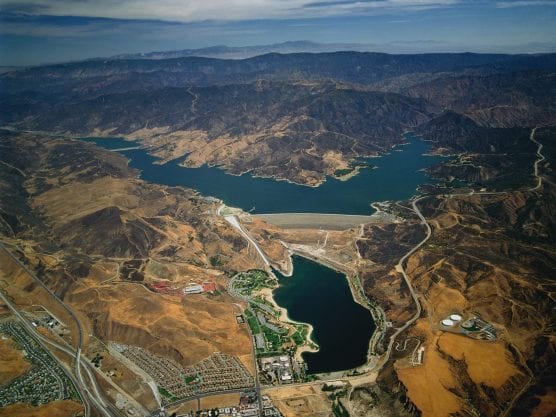In response to concerns about power outages, wildfires and the water used to put them out, local water officials unveiled details of an emergency plan Tuesday, explaining how SCV Water is prepared for emergencies.
With the extreme weather the Santa Clarita Valley has experienced lately – red flag wind warnings, extremely low humidity and massive wildfires – residents and businesses may be wondering about water supplies during a power outage, agency spokeswoman Kathie Martin wrote in a news release issued Tuesday.
SCV Water has an operational plan in place in the event of an emergency, she said, noting that during Red Flag Warnings, the agency operates its tanks at their highest level and keeps them full so that the agency can maintain as much water as possible in the local water system.
“We use a supervisory control and data acquisition system involving a network of computers and sensors, to view and monitor all of our tank levels throughout the valley,” Martin said.
“We receive pinpoint notices from Southern California Edison for where and when power is expected to go down, so we can move generators to those specific facilities and have personnel available to monitor the situation closely,” she said.
Should power go out, the agency has large generators available to deploy to key booster stations to keep water flowing. The generators can run up to 12 hours before refueling is necessary.
Insight into the agency’s operational plans for short- and long-term emergencies comes on the heels of several devastating wildfires.
Last month, the Tick Fire burned 4,615 acres across the SCV, destroyed 23 homes and damaged 40 others.
SCV Water has staff on-call after regular business hours every day, should they be needed for an emergency.
The Rio Vista Water Treatment Plant, on Bouquet Canyon Road, overlooking Central Park, has backup power and can continue to operate for four to five days without power, and then monitor and refuel as necessary, officials said in their news release.
“We continue to look for additional ways to improve our preparedness and system resiliency to provide water service during emergency conditions,” Martin wrote.
Adding to the many sources of water that Los Angeles County Fire Department has at its disposal, SCV Water provided additional access at some of its facilities.
“In addition to the fire hydrants you see throughout the valley, we also help aerial firefighting efforts with two helipads, two dip tanks, and another helipad planned at the new Castaic High School,” Mike Alvord, director of operations, was quoted as saying.
Helipads are locations where helicopters can fill from hydrant-type connections. Dip tanks are hard or soft-sided open tanks available to “snorkel” water from.
“SCV Water staff have spent countless hours to develop and fine-tune an operations plan that can prepare us for short- and long-term emergencies,” SCV Water board President Bill Cooper was quoted as saying.
“It’s reassuring to know preparedness is a high priority, and one we can better manage now as a single, regional water provider,” he said.
Like this:
Like Loading...
Related





 Tweet This
Tweet This Facebook
Facebook Digg This
Digg This Bookmark
Bookmark Stumble
Stumble RSS
RSS


























REAL NAMES ONLY: All posters must use their real individual or business name. This applies equally to Twitter account holders who use a nickname.
2 Comments
Hey Bill;
Looks to me like you new Water Kings better get off your couches and get to providing more giant water tanks ready around the valley for fire fighting. You might want to look up the new “Heli-hydrant” concept of both permanent and transportable water containers that fire-fighting helicopters can hover over and suck up a few thousand gallons to help in fire-fighting in your service area.
Ship some of that San Joaquin Valley water down here where it can be put to good use.
And Oh, by the way…tell Ed “Jerry” Gladbach I said “Hi, and Howdy!”
We used to work together at LADWP… and occasionally see each other at Costco.